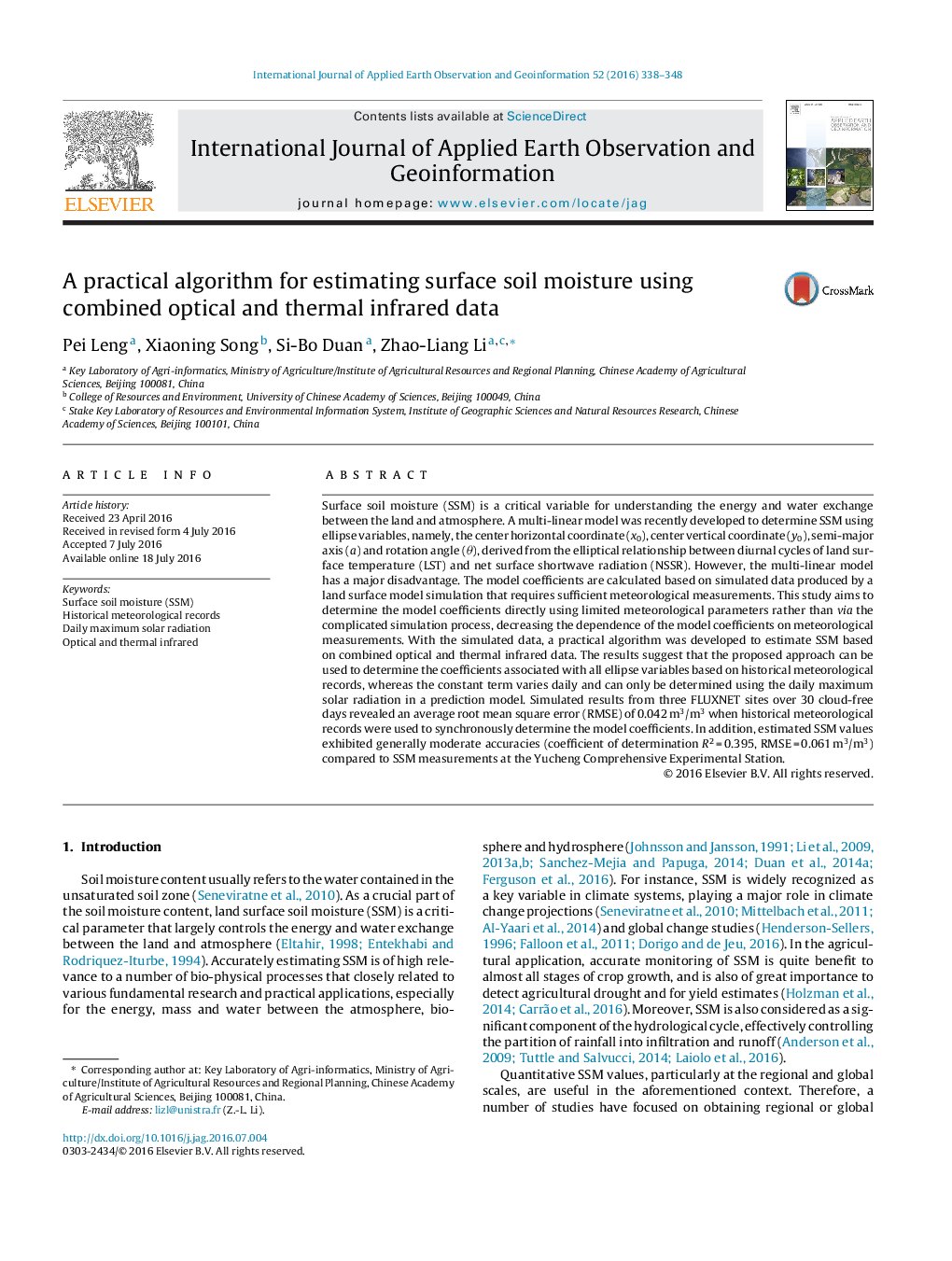| Article ID | Journal | Published Year | Pages | File Type |
|---|---|---|---|---|
| 6348494 | International Journal of Applied Earth Observation and Geoinformation | 2016 | 11 Pages |
Abstract
Surface soil moisture (SSM) is a critical variable for understanding the energy and water exchange between the land and atmosphere. A multi-linear model was recently developed to determine SSM using ellipse variables, namely, the center horizontal coordinate (x0), center vertical coordinate (y0), semi-major axis (a) and rotation angle (θ), derived from the elliptical relationship between diurnal cycles of land surface temperature (LST) and net surface shortwave radiation (NSSR). However, the multi-linear model has a major disadvantage. The model coefficients are calculated based on simulated data produced by a land surface model simulation that requires sufficient meteorological measurements. This study aims to determine the model coefficients directly using limited meteorological parameters rather than via the complicated simulation process, decreasing the dependence of the model coefficients on meteorological measurements. With the simulated data, a practical algorithm was developed to estimate SSM based on combined optical and thermal infrared data. The results suggest that the proposed approach can be used to determine the coefficients associated with all ellipse variables based on historical meteorological records, whereas the constant term varies daily and can only be determined using the daily maximum solar radiation in a prediction model. Simulated results from three FLUXNET sites over 30 cloud-free days revealed an average root mean square error (RMSE) of 0.042 m3/m3 when historical meteorological records were used to synchronously determine the model coefficients. In addition, estimated SSM values exhibited generally moderate accuracies (coefficient of determination R2 = 0.395, RMSE = 0.061 m3/m3) compared to SSM measurements at the Yucheng Comprehensive Experimental Station.
Related Topics
Physical Sciences and Engineering
Earth and Planetary Sciences
Computers in Earth Sciences
Authors
Pei Leng, Xiaoning Song, Si-Bo Duan, Zhao-Liang Li,
